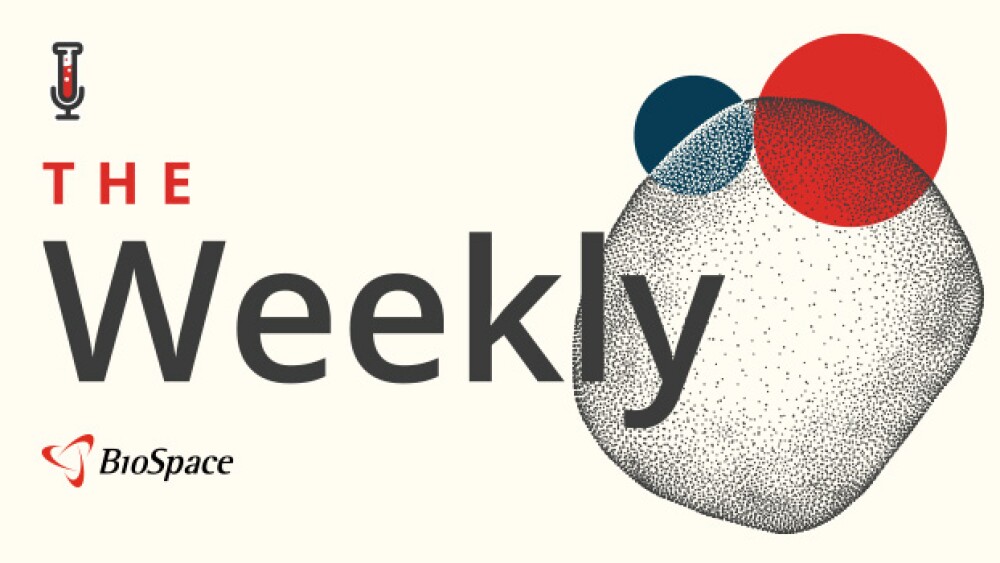Biopharma doubles down on immunology and inflammation as companies target new pathways and seek to improve on current options in inflammatory bowel disease, atopic dermatitis, myasthenia gravis and more.
One of biopharma’s hottest therapeutic areas, immunology and inflammation has seen an uptick in M&A activity in recent years, with big names like Sanofi and Gilead dropping billions of dollars to expand their I&I pipelines. At the same time, the space is seeing an influx of new companies, including Bambusa Therapeutics, which launched Friday with $90 million in series A funds.
Momentum in this space was sparked at the turn of the century by the arrival of therapeutic antibodies. After winning FDA approval in 2002, Abbvie’s Humira—the first tumor necrosis factor (TNF) inhibitor—became one of the best-selling drugs of all time, generating over $200 billion in lifetime sales to patients with rheumatoid arthritis, psoriasis, ulcerative colitis, Crohn’s disease and more.
Over 20 years later, with Humira and other key medicines having lost their exclusivity and research providing a better understanding of the biology underlying the field, it’s time for the next wave of I&I. Indeed, novel targets and modalities are attracting an influx of investment into the I&I space, said Thomas Smith, a senior research analyst covering immunology at Leerink Partners.
“We’re seeing antibodies that are going after targets that have not been targeted before, small molecules that were previously thought to be undruggable,” he told BioSpace. “We’re seeing the emergence of cell therapies.”
And there’s room for them all. The second largest therapeutic area by value in 2023, the immunology market is projected to be worth more than $257 billion by 2032.
“[I&I] has large end markets of highly prevalent diseases that, despite having multiple treatment options, still have persistent, high medical need,” Smith said.
M&A Expected to Continue in 2025
The I&I space has made headlines recently for a spate of high-profile deals. In April 2024, Vertex struck the biggest deal in biopharma last year with its $4.9 billion buy of Alpine Immune Sciences. Then in June, Eli Lilly dropped $3.2 billion to acquire Morphic Holding. These deals followed Merck’s eyepopping $10.8 billion pick-up of Prometheus Biosciences a year earlier.
While many big pharma companies already have their own immunology platforms, “innovation does not happen in isolation,” Shaju Backer, global head of immunology at Sanofi, told BioSpace in an email. This is why his company also complements its in-house R&D with a myriad of strategic partnerships and acquisitions. In 2021, Sanofi acquired Kymab for $1.4 billion to add an anti-OX40 ligand to its pipeline, hoping to address the underlying disease pathologies of inflammatory diseases like atopic dermatitis without depleting T cells.
More recently, Gilead struck a deal last month with LEO Pharma worth up to $1.7 billion for its preclinical STAT6 program. Smith expects more of the same in the near future. “We have a lot of reason for thinking this is going to continue to be the case in 2025,” he said.
Pursuit of Novel Targets
TNF blockers like Humira cast a wide net, pulling in some ten indications. Yet patients and practitioners have seen the effects of Humira and other anti-TNF therapies wear off relatively quickly because ancillary pathways take over, according to Backer, making it necessary to target other pathways for disease management and, hopefully, remission.
One of these, the TL1A pathway, plays a key role in driving inflammation and fibrosis in various autoimmune diseases, making its inhibition a promising strategy for multiple indications, including inflammatory bowel disease (IBD). Merck’s Prometheus buy brought in a potentially best-in-class TL1A inhibitor in late-stage studies for ulcerative colitis and Crohn’s disease. And Sanofi is co-developing a TL1A-targeting antibody, duvakitug, with Teva Pharmaceuticals.
Another target generating a lot of interest is the signal transducer and activator of transcription 6 (STAT6) transcription factor, which is a key regulator of Th2-driven immune response. Indication potential is wide-ranging for STAT6-targeted oral drugs, which could offer an alternative to existing injectable biologics.
Gilead’s recent deal with LEO Pharma is one example. While the specific indication has not yet been announced, Flavius Martin, executive vice president of research at Gilead, told BioSpace in an email that the program is “advancing rapidly” toward clinical testing. Elsewhere, Sanofi extended its collaboration with Nurix Therapeutics last year to include a targeted protein degrader of STAT6.
These are but a few of the many targets now being explored in the I&I space. Others run the gamut from Sanofi’s T cell receptor–targeting amlitelimab for atopic dermatitis, with a 52-week data readout expected in March, to the microRNA-targeting obefazimod from Paris-based biotech Abivax, which is awaiting a Q3 2025 Phase III readout in ulcerative colitis.
Finally, the “unbridled success” of cell therapies in hematological malignancies is now driving efforts to bring cell therapy to the I&I space, particularly for autoimmune disease, Smith said. Companies like Kyverna are developing CAR T cell therapies to deliver complete B cell depletion that could help reset a patient’s immune system to eliminate the need for chronic treatment. Kyverna is targeting a 2026 filing for its lead therapy KYV-101 in stiff person syndrome, with myasthenia gravis and lupus nephritis to follow.
Meanwhile, Arcellx is taking its cell therapy pipeline from multiple myeloma into autoimmune disease. Last fall, the FDA cleared the company’s Investigational New Drug (IND) application to begin a Phase I trial of its CAR T anito-cell in generalized myasthenia gravis.
If successful, Smith said the biggest challenges to cell therapies for autoimmune indications would be logistics, scalability, reimbursement and identifying the right patients for treatment.
The beauty of the I&I space is that one molecule can have many different applications, Jorge Santos da Silva, CEO of Moonlake Therapeutics, which is developing treatments for inflammatory indications including hidradenitis suppurativa, told BioSpace. “In I&I, you can have these molecules that just walk across a whole lot of therapeutic areas,” a feature he said makes it ripe for investment by biopharma.
Smith agreed. “The end markets for I&I relative to targeted oncology are much broader,” he told BioSpace. “There’s a lot of white space.”5 I&I Diseases Poised for Disruption in 2025
Thomas Smith, a senior research analyst covering immunology at Leerink Partners, highlighted five indications within the I&I space that he believes could see substantive movement this year.
Editor’s note: Lists of approved products and products in development are not comprehensive.
Metabolic Dysfunction-Associated Steatohepatitis (MASH)
The most severe form of nonalcoholic fatty liver disease, MASH affects 5% to 7% of the global population.
Approved Products:
Madrigal’s Rezdiffra
In Development:
Akero Therapeutics’ efruxifermin (Phase III)
Boehringer Ingelheim’s survodutide (Phase III)
Novo Nordisk’s semaglutide (Phase III)
Eli Lilly’s tirzepatide (Phase II)
Inflammatory Bowel Disease
Inflammatory bowel disease (IBD)—including ulcerative colitis (UC) and Crohn’s disease (CD)—affects between 2.4 and 3.1 million people in the U.S.
Approved Products:
Eli Lilly’s Omvoh
Johnson & Johnson’s Remicade
AbbVie’s Humira
In Development:
Abivax’s obefazimod for UC (Phase III)
Sanofi and Teva’s duvakitug for UC (Phase II)
Equillium and Biocon’s Itolizumab for UC (Phase II)
Myasthenia Gravis
A chronic autoimmune disorder causing weakness in the voluntary muscles, myasthenia gravis afflicts up to 60,000 people in the U.S.
Approved Products:
Argenx’s Vyvgart
AstraZeneca’s Ultomiris
UCB’s Rystiggo
In Development:
Johnson & Johnson’s nipocalimab (under review)
Cabaletta Bio and Kyverna Therapeutics’ CABA-201 (Phase I/II)
COUR Pharmaceuticals’ CNP-106 (Phase II)
Atopic Dermatitis
Atopic dermatitis—a chronic skin condition that causes the skin to become red, itchy and inflamed—affects more than 7% of people in the U.S.
Approved Products:
Sanofi and Regeneron’s Dupixent
Eli Lilly’s Ebglyss
Galderma’s Nemluvio
In Development:
Sanofi’s amlitelimab (Phase III)
Kymera Therapeutics and Sanofi’s IRAK4 (Phase II)
Apogee Therapeutics’ APG777 (Phase II)
Hidradenitis Suppurativa
Another chronic, inflammatory skin condition, hidradenitis suppurativa afflicts 1% to 4% of the global population.
Approved Products:
AbbVie’s Humira
Novartis’ Cosentyx
UCB’s Bimzelx
In Development:
Moonlake Therapeutics’ sonelokimab (Phase III)
Incyte’s povorcitinib (Phase III)





